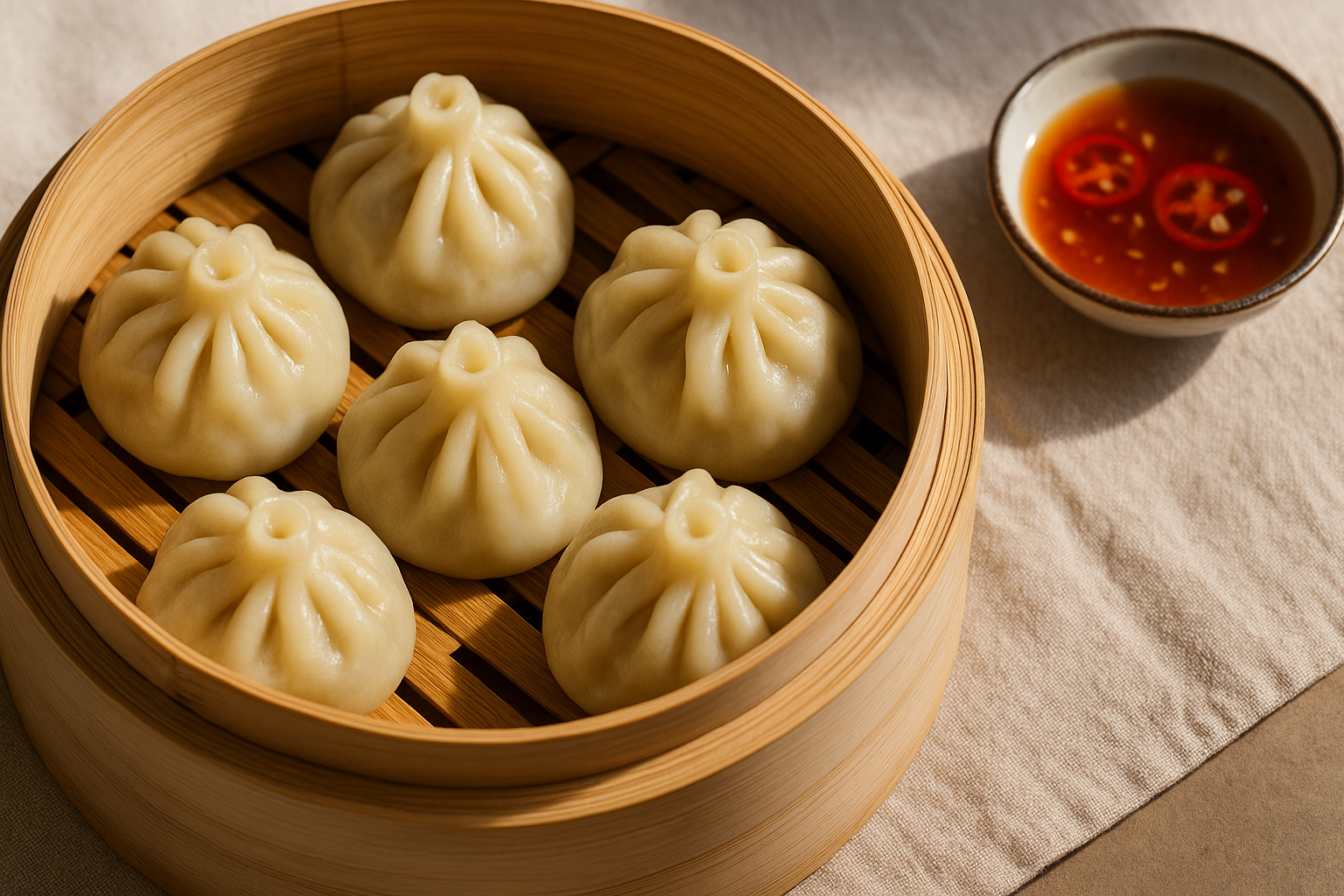Dumplings often get labeled as comfort food — the kind you crave after a long day or on a chilly evening. But when you’re trying to lose weight, they can also feel like the kind of food you’re supposed to avoid. The truth, however, is a lot less black and white. Dumplings aren’t the enemy of your diet — in fact, when you understand what goes into them and how to cook them, they can fit surprisingly well into a balanced weight-loss plan.
At their simplest, dumplings are made from a thin wrapper of flour and water filled with a mix of protein, vegetables, and seasoning. That’s not much different from what you’d find in a lean stir-fry or a rice paper roll — it’s just packaged differently. The average steamed dumpling contains around 40 to 50 calories, which means a serving of six to eight pieces can sit comfortably between 250 and 400 calories, depending on the filling. Choose ingredients like chicken, shrimp, or tofu over fatty pork, and you instantly reduce the fat while keeping the protein high. Add in vegetables like cabbage, mushrooms, or carrots, and you’ll boost fiber and stay fuller for longer. If you’re interested in exact figures, our article on Dumpling Nutrition Facts: Calories, Protein, and Carbs Explained breaks down the numbers in detail.
The biggest difference between a “healthy” dumpling and an indulgent one usually comes down to how it’s cooked. Steaming is the best option for anyone watching their calories because it keeps the fat content low and the texture soft. Boiled dumplings are another great choice, especially when paired with a light soup or broth instead of oily sauces. The pan-fried versions, while incredibly flavorful, should be enjoyed in moderation — a single tablespoon of oil can add 120 calories to a pan. If you can’t resist that golden crust, try the lighter “steam-fry” technique featured in The Secret to Perfect Pan-Fried Dumplings, which gives you crispness with far less oil. We also compared each method in Boiled vs Steamed vs Pan-Fried Dumplings: Which One’s Actually Healthier?.
When it comes to weight loss, portion control is just as important as cooking style. Dumplings are small, and it’s easy to eat more than you realize. The ideal serving is about six to eight dumplings, paired with a side of steamed vegetables or miso soup instead of rice or noodles. That way, you get a satisfying, balanced meal that’s low in calories but high in flavor. Be cautious with sauces too — soy sauce is high in sodium, which can cause water retention. Mixing vinegar, chili, and a splash of sesame oil gives you all the flavor without the salt overload.
If you like cooking at home, making dumplings from scratch lets you control every ingredient. You can create lighter wrappers and smaller portions by following our recipe for How to Make the Perfect Dumpling Dough from Scratch. Use lean meat, tofu, or mixed vegetables as filling, and try steaming instead of frying. You’ll be surprised how satisfying they are without the heaviness.
Of course, losing weight isn’t just about counting calories — it’s also about finding meals that make you feel good and keep you consistent. Dumplings tick both boxes. They’re portion-friendly, naturally balanced, and deeply comforting. Eating a few steamed dumplings mindfully, with the right sides and sauces, can feel indulgent while still supporting your goals. As we explored in Are Dumplings Healthy? A Dietitian Explains the Truth About Your Favourite Comfort Food, moderation and mindful cooking are what make dumplings part of a sustainable, healthy lifestyle.
So yes, dumplings can absolutely have a place in your diet. The secret isn’t in cutting them out but in preparing and enjoying them differently. Choose steamed or boiled versions, fill them with lean protein and greens, limit your sauces, and stick to realistic portions. With those small adjustments, dumplings transform from a “cheat meal” into a smart, balanced comfort food that fits perfectly into a weight-loss routine.
And if you ever doubt whether healthy food can still taste good, just remember — balance is what makes every bite worthwhile.
